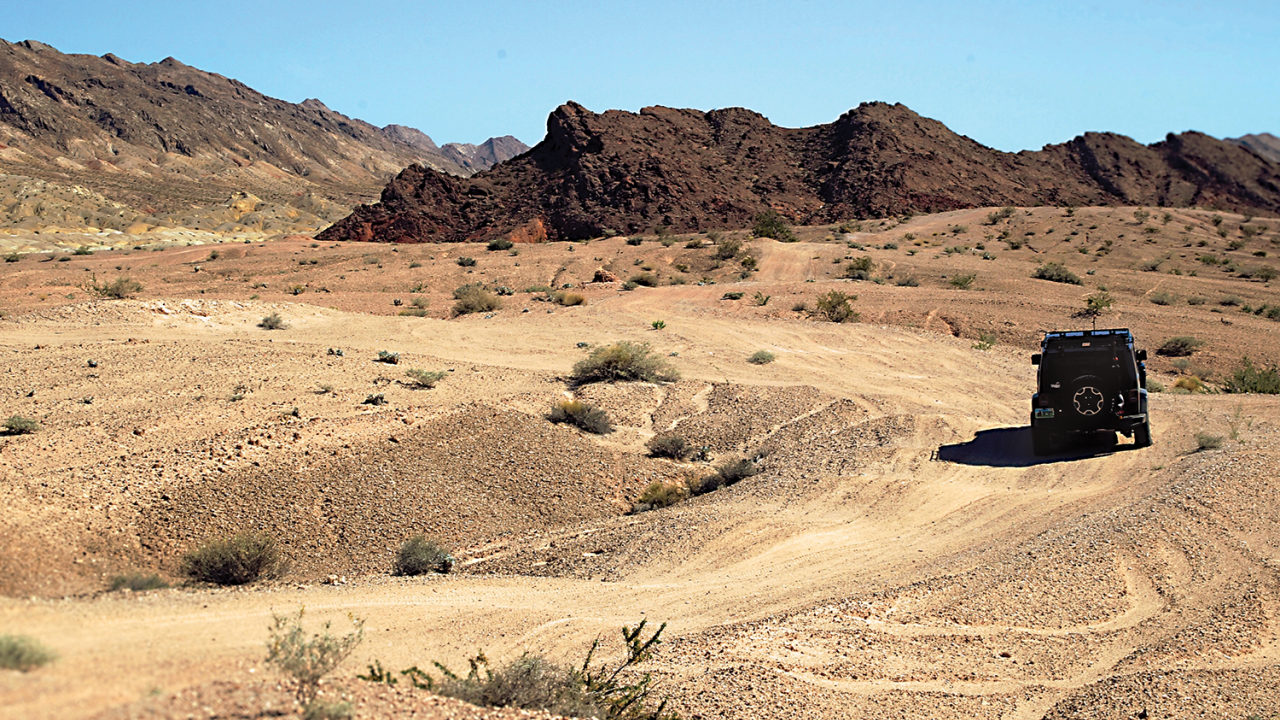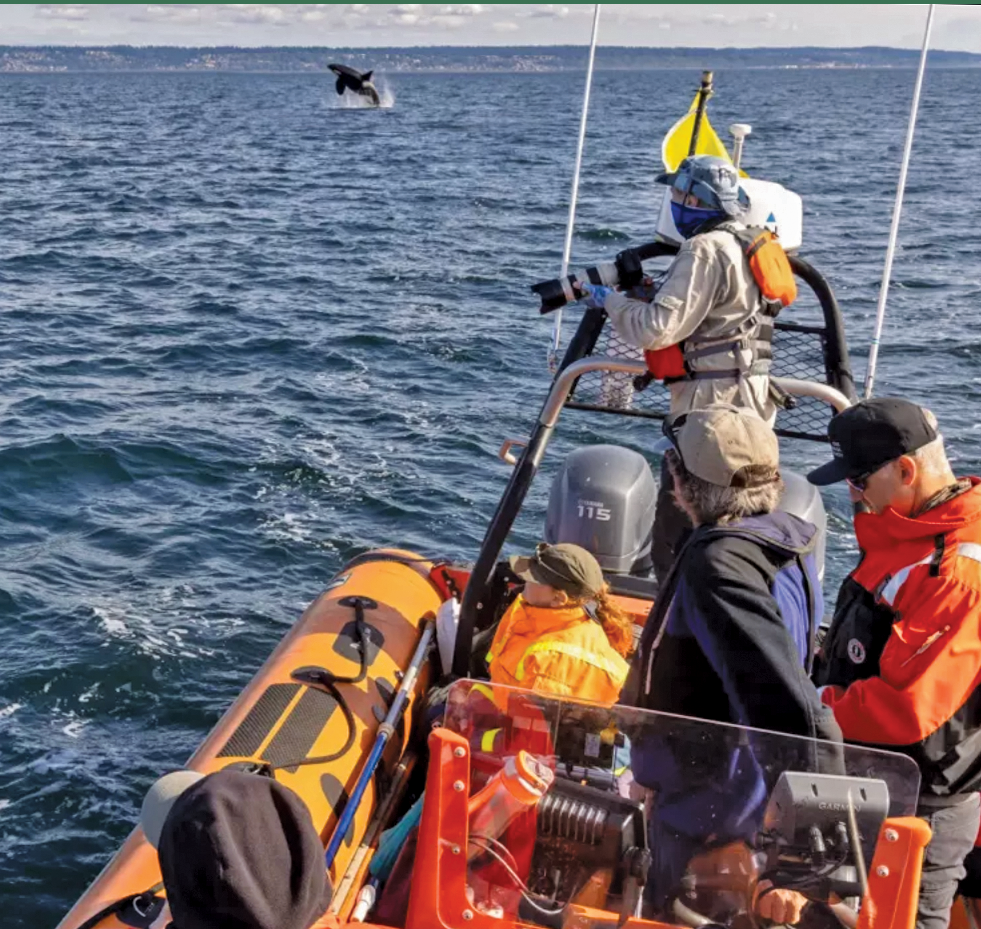
Photo: Nicolas Cool
News Bites
Climate Change Driving Valley Fever Spread
Cases of Valley fever have quadrupled in the last 20 years, and human-driven climate change may be responsible. The disease, caused by the flesh-eating fungus Coccidioides, affects tens to hundreds of thousands of people annually with many experiencing no symptoms and others misdiagnosed because symptoms overlap with common illnesses like the flu. In rare cases, it can be debilitating and even fatal. The disease costs the states where it is most prevalent—Arizona and California—about $1.5 billion per year.
Valley fever also affects pets, particularly dogs, and other animals that dig in the dirt. An extensive Washington Post feature included a study by Professor Jane Sykes that gathered data on canine cases of Valley fever from veterinary clinics across the country. Analysis of the over 800,000 data points indicated that canine cases over the past 10 years spread north and east, mimicking the same geographic spread in human cases.
The fungus thrives in dry soils, travels in plumes of dust, and multiplies in the aftermath of extreme drought. Scientists suspect that climate change could be driving fungal transmission through migrating rodents, frequent dust storms and expanding wildfires. As drought conditions affect agricultural fields and housing expands into desert regions, the fungus is likely to spread throughout the western United States.
The news feature reported on recent cases of Valley fever and scientists that are urgently searching for answers using drones, air filters and dirt samples. In the soil, the microscopic fungus filaments are invisible to the human eye. Those filaments can break off and travel long distances when the soil is disturbed. The spores are even harder to detect in the air than the soil. Figuring out where the fungus is currently and where it is heading will be critical to preventing cases and saving lives.

Conversation Between Humans and Humpback?
Scientists from the SETI Institute, UC Davis and the Alaska Whale Foundation made worldwide headlines after reporting an encounter with a humpback whale named Twain that could reveal the potential for non-human intelligence communication. Media outlets such as Daily Mail, Sky News, and IFL Science among others reported on the conversational replies of the cetacean to a recorded humpback “contact” call played into the sea via an underwater speaker. The chatty cetacean responded to the playback and matched interval variations between signals for 20 minutes in what is thought to be the first communicative exchange between humans and humpbacks in the whales’ language. The team is studying humpback whale communication systems in an effort to develop intelligence filters that could be applied to the search for extraterrestrial intelligence. Just as Antarctica is used to simulate conditions on Mars, these efforts to understand intelligent, terrestrial, non-human communication systems will aid in the development of filters for extraterrestrial signals and mathematical models to quantify communicative complexity.

Elephant Seals in Argentina Hit by Avian Influenza
An outbreak of high pathogenicity H5N1 avian influenza (HPAI) in elephant seals in Argentina has raised concerns for conservation and cross-species transmission. The outbreak caused significant mortality in young pups and adult seals in surveyed areas at Peninsula Valdés. The loss of a cohort of young females, who would have reached reproductive age in a few years, will have significant population level effects.
Articles in The Telegraph, Washington Post, Popular Science and outlets worldwide explained that the disease has also spread to other marine mammal populations, causing the deaths of South American sea lions and fur seals along the Argentine Patagonia coastline. Possible transmission between mammals raises concerns for public health and reinforces the need for urgent characterization and monitoring of virus evolution—efforts led by veterinarians from the school’s Karen C. Drayer Wildlife Health Center Latin America Program in collaboration with researchers from the Instituto de Virología, Instituto Nacional de Tecnología Agropecuaria in Argentina.
Not much can be done once the virus reaches wildlife populations. Appropriate biosecurity measures are necessary to prevent the spread of the disease, as the virus has been responsible for the deaths of terrestrial carnivores around the world, including the United States.

Can Genetically Modified Mosquitoes End Disease?
Genetic engineering may be able to stop a particular mosquito species from spreading malaria, the deadliest mosquito-borne disease. Dr. Gregory Lanzaro, who leads the University of California Malaria Initiative, and his team are trying to harness genetics in the fight against malaria on a remote African island that relies on foreign aid to combat the disease.
The New York Times detailed the scientists’ efforts to determine the size of the local mosquito population and how far individuals travel as important steps towards replacing the current population with genetically modified mosquitoes that cannot transmit the malaria parasite
In their laboratory, the team has engineered Anopheles coluzzii that block the malaria parasite. Using a process called gene drive, which spreads a trait through a population at a faster rate than it would through normal inheritance, this genetic engineering approach could theoretically make every individual in the local mosquito population immune to the malaria parasite in only a few generations.
Although a permanent solution to malaria in this region is needed, genetic technology is controversial. Governments and environmentalists are hesitant about its use. The research team hopes that public education efforts will help assuage these fears.

House Calls for Killer Whales
Bad breath can happen to anyone, but when a group of scientists identified a fetid mist emanating from a group of whales, they knew something was wrong. The New York Times reported on the team’s use of a breath-collecting drone—an experimental diagnostic approach still under development—to perform a veterinary exam. This unique tool was available thanks to a long-term effort by veterinarians, marine biologists, and engineers—including experts from the school’s SeaDoc Society—to perform regular, remote health assessments on Southern Resident killer whales, an endangered population of orcas that inhabit the Pacific Northwest. The team collected a breath sample from the affected individual, a female named Tsuchi, and were reassured to find no evidence of bacterial or viral infection. A small number of red blood cells in the sample, however, suggested that the whale was bleeding somewhere in her respiratory tract, essentially the equivalent of a whale nosebleed. The next time they encountered her, the bad breath was gone. Although they were not able to pinpoint the exact cause of the original odor, they were able to successfully sample and assess an individual that they were concerned about—a first step to providing personalized medical care in the wild. Veterinary interventions alone will not save this population of Southern Resident killer whales, but they might provide conservation efforts more time to have a positive impact.
